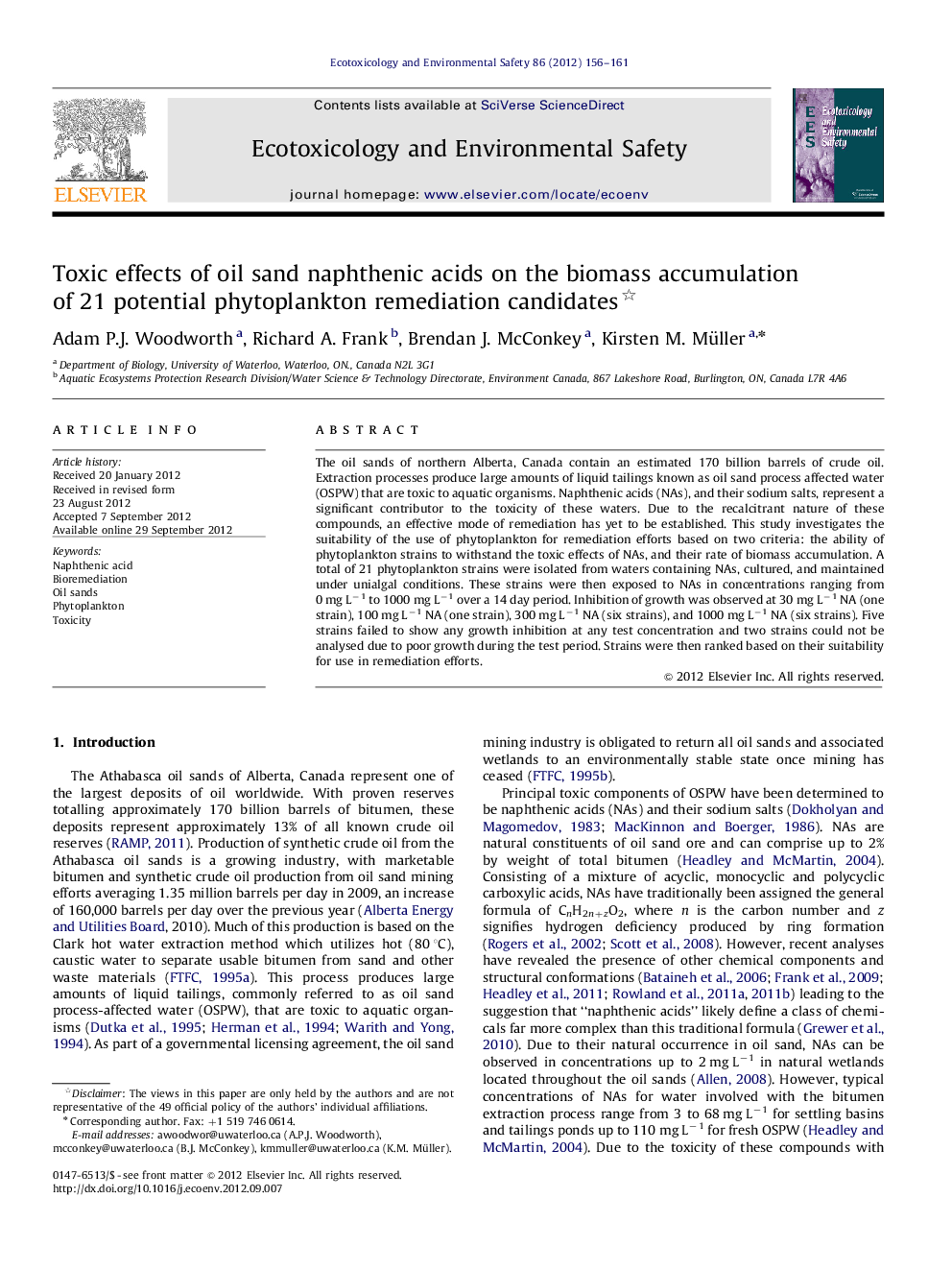| کد مقاله | کد نشریه | سال انتشار | مقاله انگلیسی | نسخه تمام متن |
|---|---|---|---|---|
| 4420557 | 1618977 | 2012 | 6 صفحه PDF | دانلود رایگان |

The oil sands of northern Alberta, Canada contain an estimated 170 billion barrels of crude oil. Extraction processes produce large amounts of liquid tailings known as oil sand process affected water (OSPW) that are toxic to aquatic organisms. Naphthenic acids (NAs), and their sodium salts, represent a significant contributor to the toxicity of these waters. Due to the recalcitrant nature of these compounds, an effective mode of remediation has yet to be established. This study investigates the suitability of the use of phytoplankton for remediation efforts based on two criteria: the ability of phytoplankton strains to withstand the toxic effects of NAs, and their rate of biomass accumulation. A total of 21 phytoplankton strains were isolated from waters containing NAs, cultured, and maintained under unialgal conditions. These strains were then exposed to NAs in concentrations ranging from 0 mg L−1 to 1000 mg L−1 over a 14 day period. Inhibition of growth was observed at 30 mg L−1 NA (one strain), 100 mg L−1 NA (one strain), 300 mg L−1 NA (six strains), and 1000 mg L−1 NA (six strains). Five strains failed to show any growth inhibition at any test concentration and two strains could not be analysed due to poor growth during the test period. Strains were then ranked based on their suitability for use in remediation efforts.
► Examination of the effects of naphthenic acids on the growth of phytoplankton.
► Lowest observed effect concentration determined for each strain.
► Phytoplankton strains are ranked based on their toxic response and overall growth.
► Potential naphthenic acid remediation candidates are proposed.
Journal: Ecotoxicology and Environmental Safety - Volume 86, 1 December 2012, Pages 156–161